Two pictures from around the apartment complex here in Dameisha.
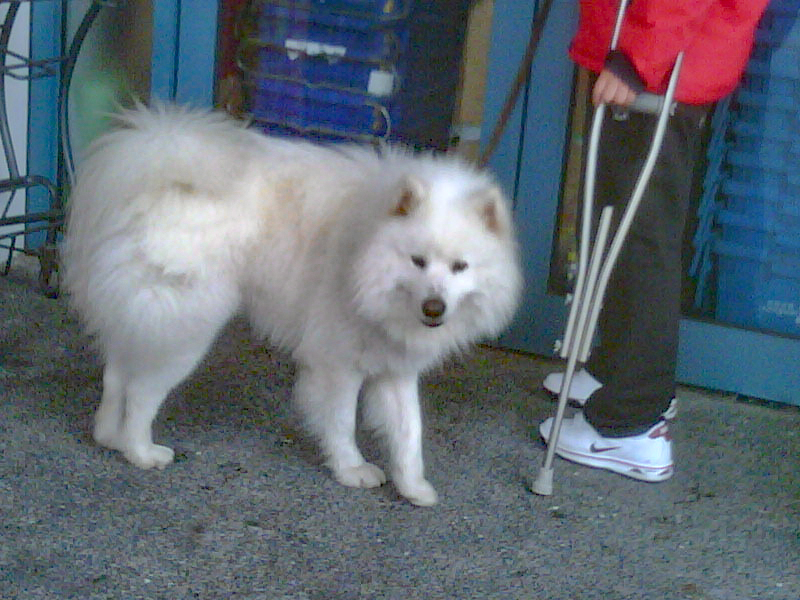
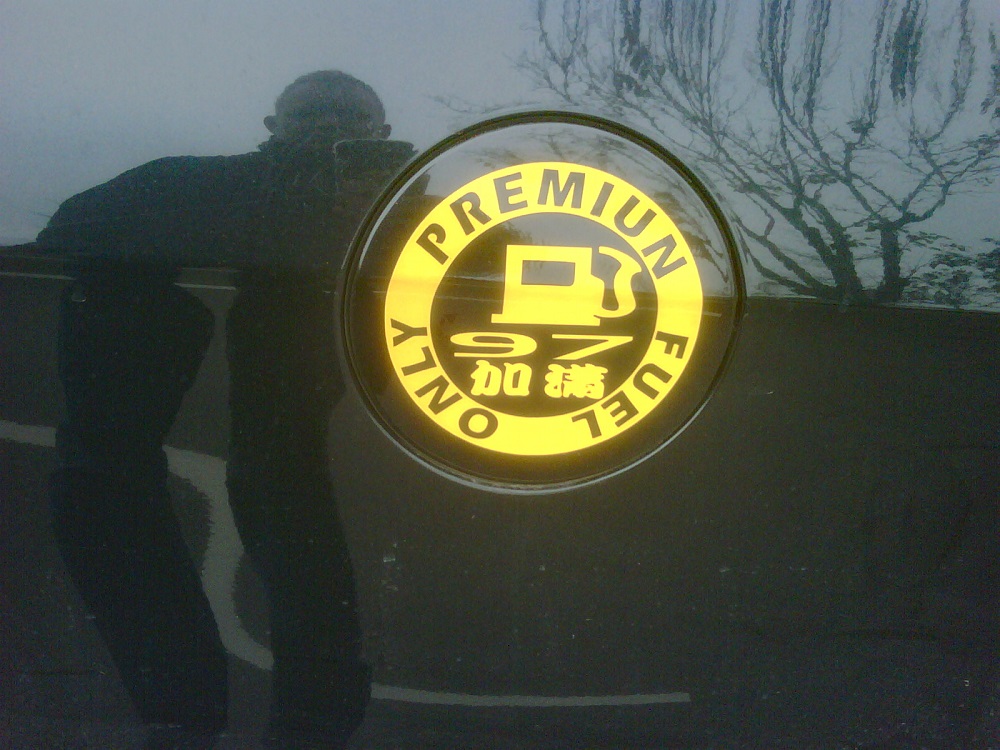
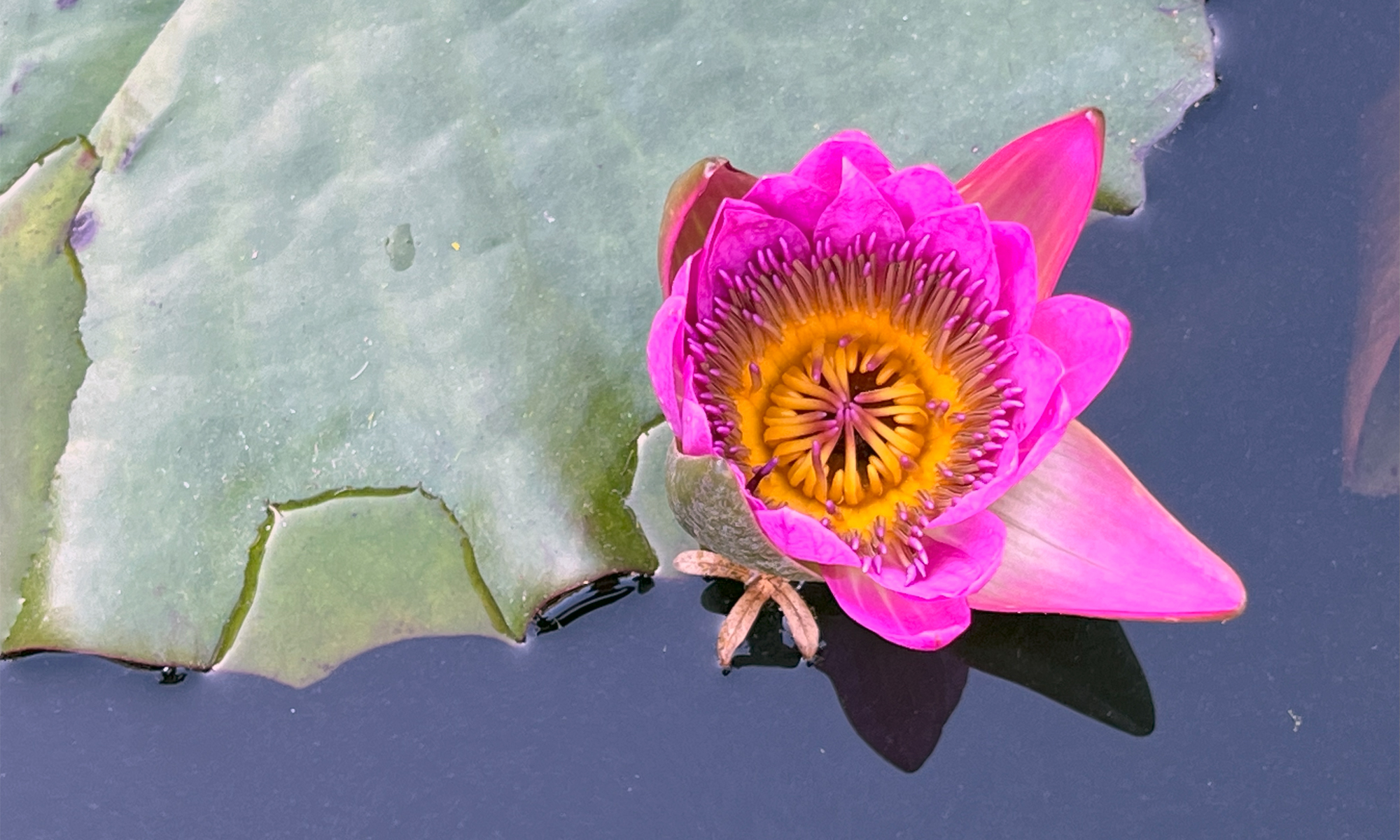
a weblog of whereabouts & interests, since 2010
Two pictures from around the apartment complex here in Dameisha.


Another day of work session facilitating for me – half of it in Chinese with me waiting patiently for the Daya Bay team animatedly discuss some design issue before them. Then I get a translation from the team lead or my Chinese colleagues, and depending on my answer back they settle down or debate it a little further : ).
It’s tough for me, and tough for them : some are seeing SAP for the first time – in English – and they are not familiar with the terms or the processes. It is packaged software, offering some setup choices, but not total freedom to redesign it. So sometimes I really have to shrug and say: ‘We just cannot change it in such a fundamental way. That’s not the way the Germans designed it’.
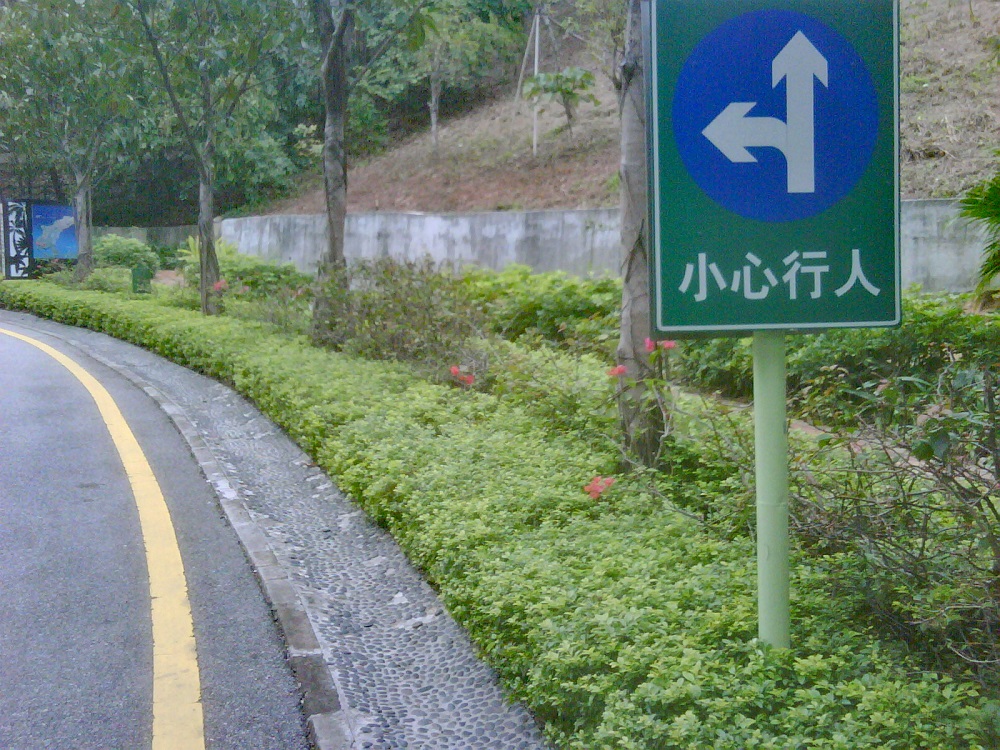
It was a long Monday at work – Mondays always seem long! but at least I can post these pictures from yesterday’s visit to the Outside China Town (OCT) theme park. Disneyland or Six Flags it is not – but there is a spectacular and steep aerial tramway up the mountainside to provide panoramic views of Dameisha, the beach and the bay down below.

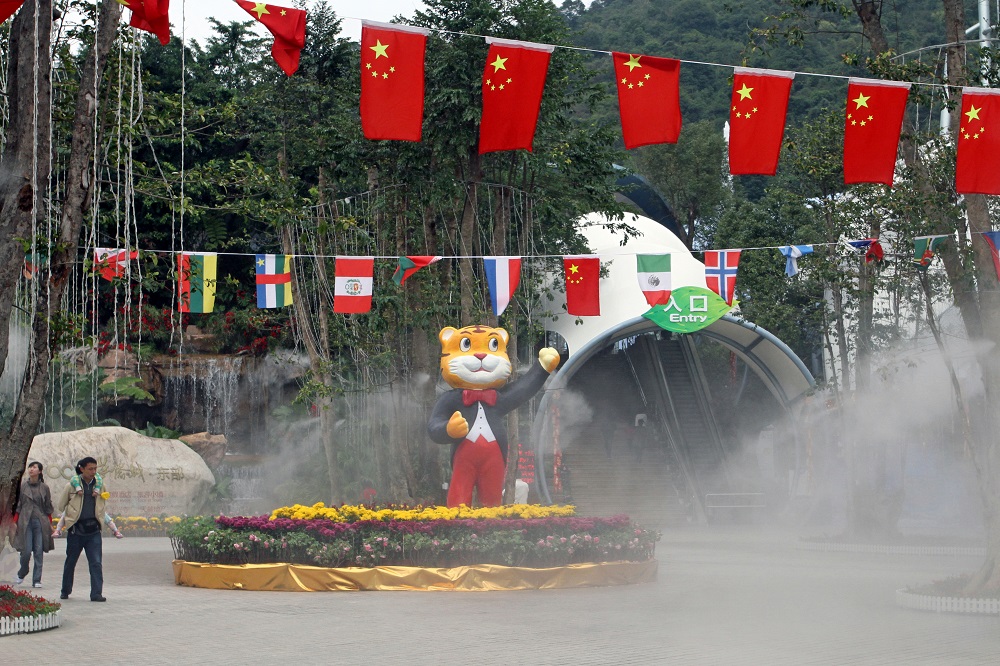
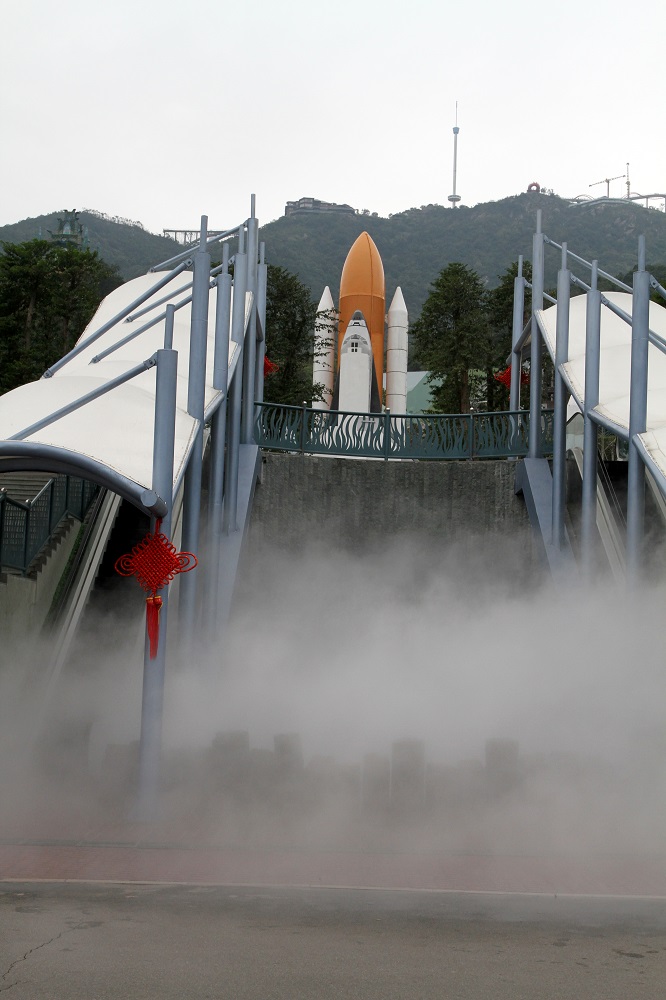

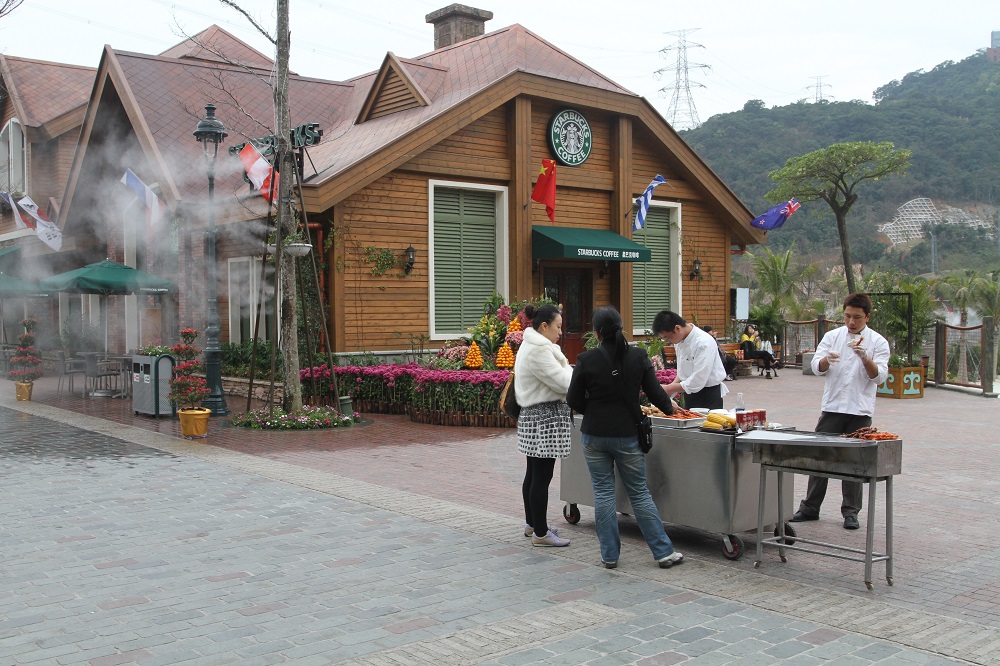
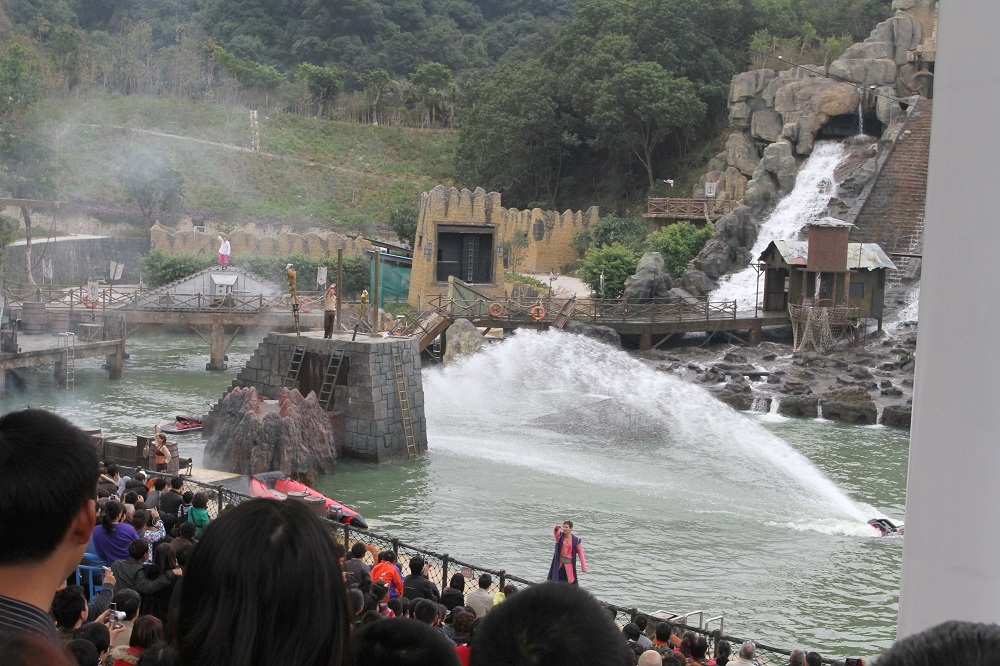
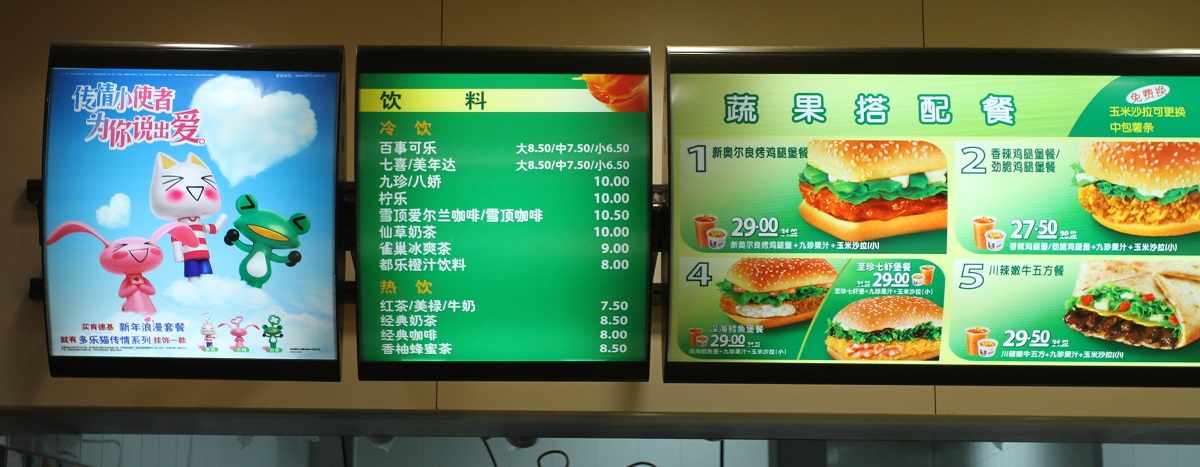
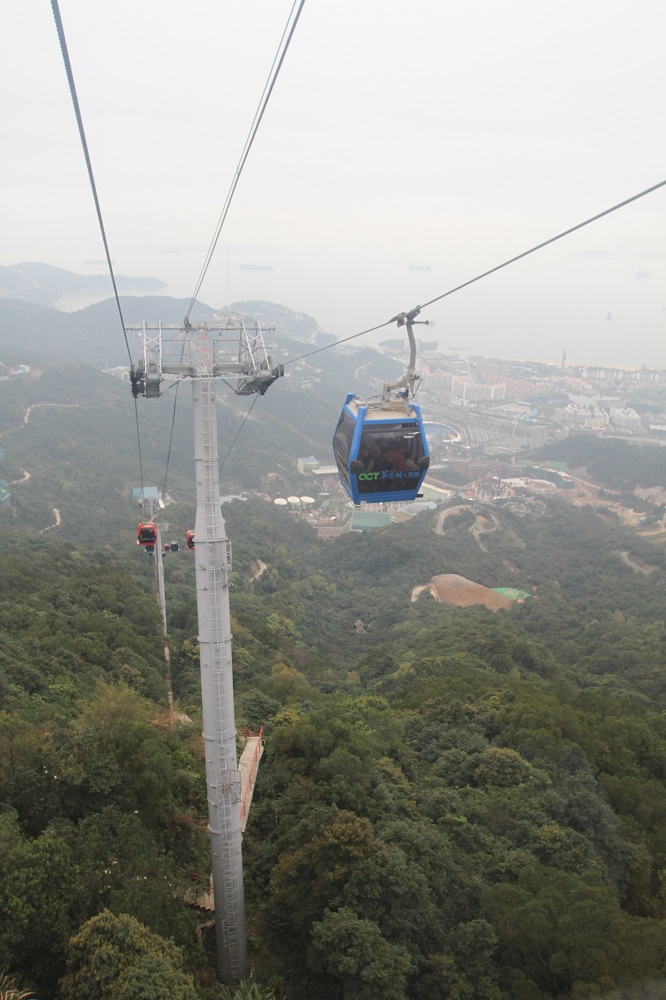
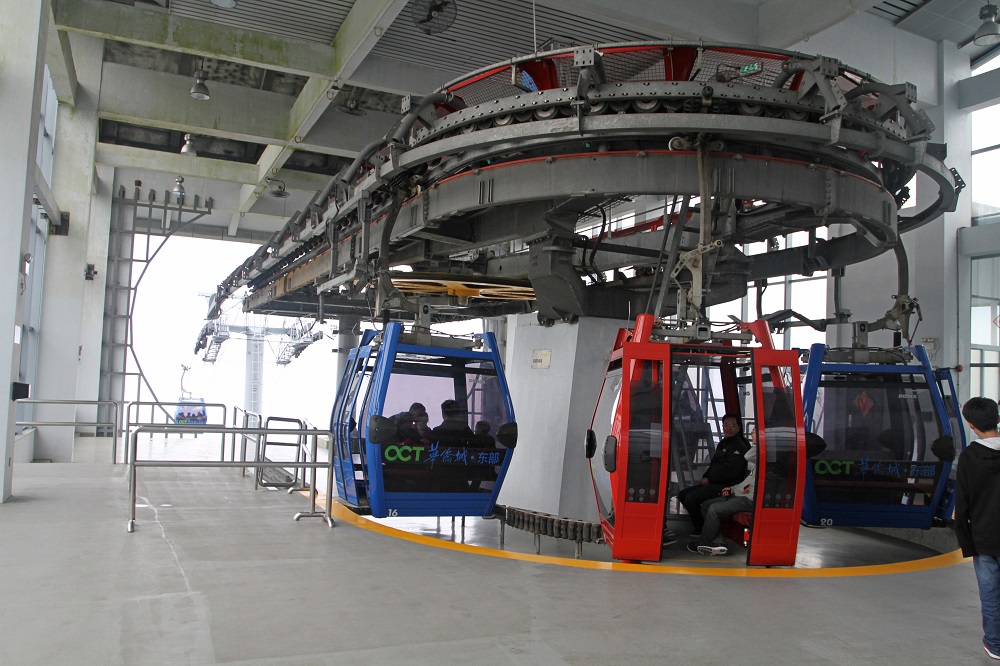
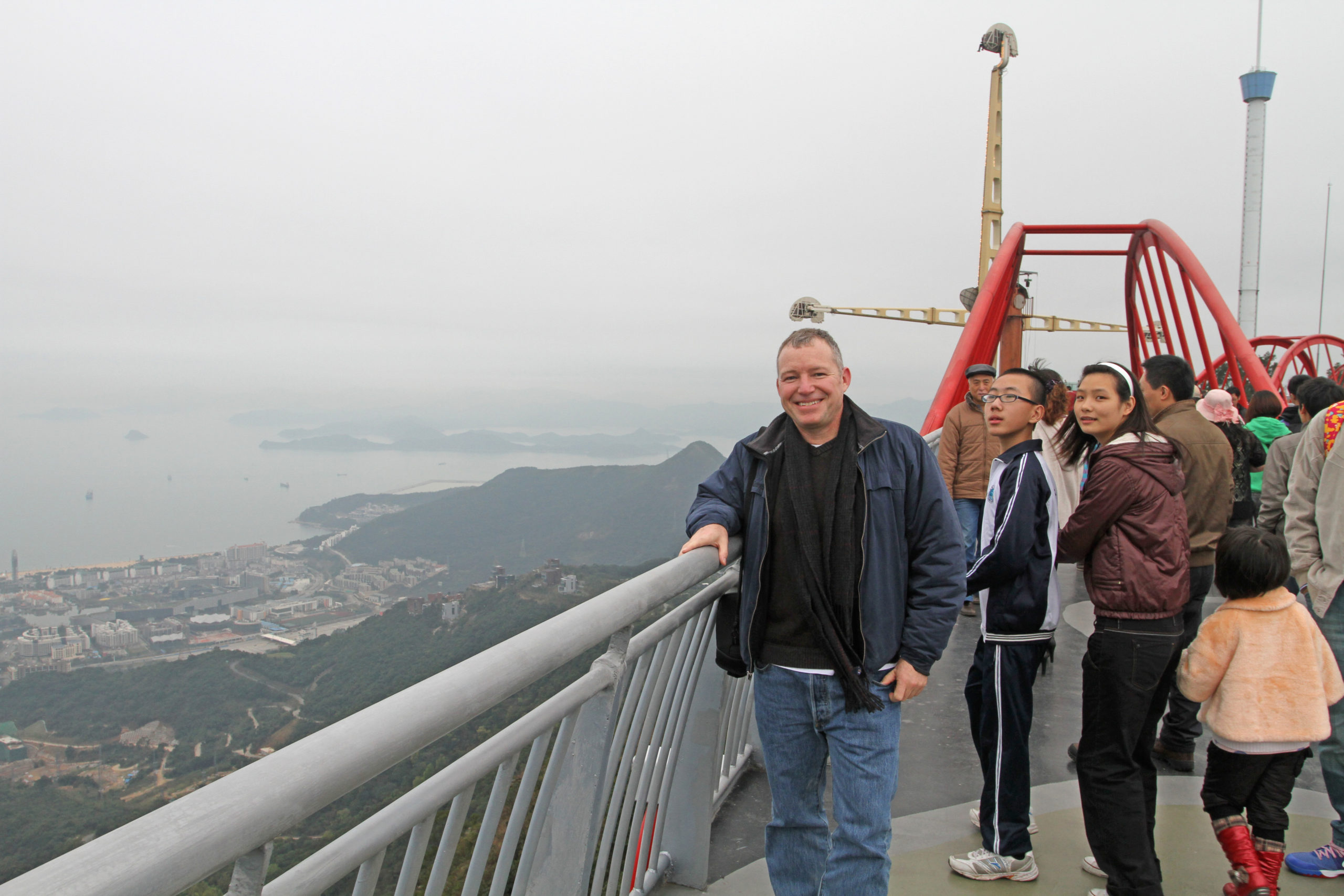
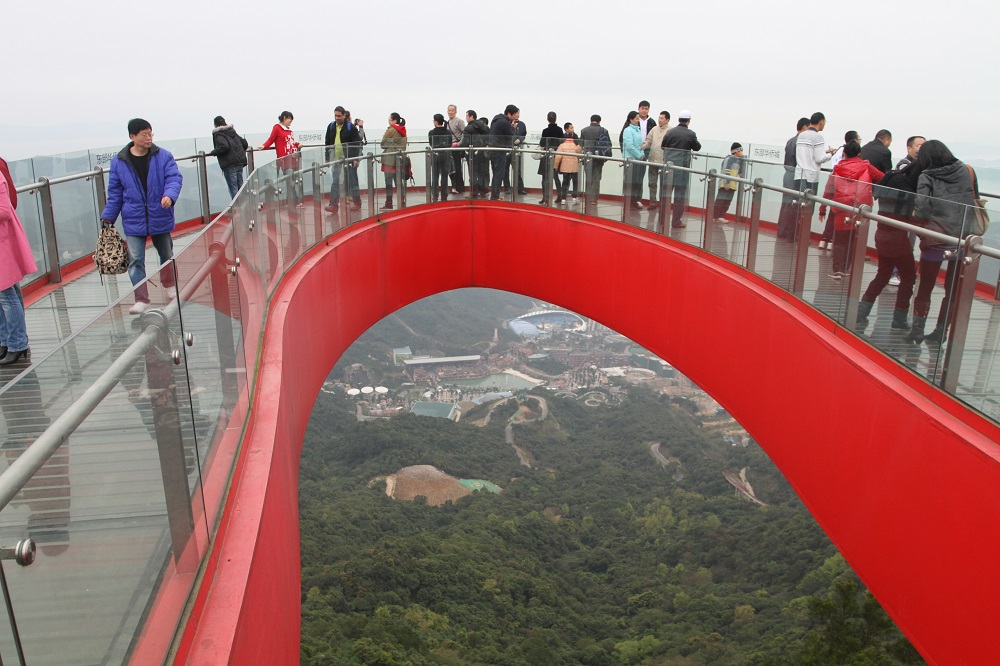
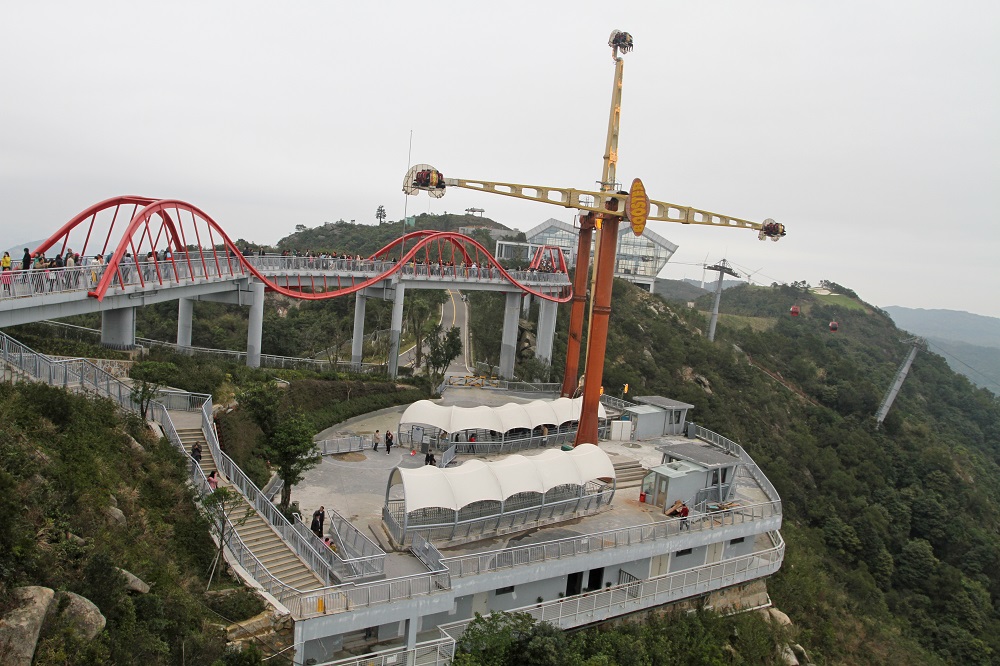

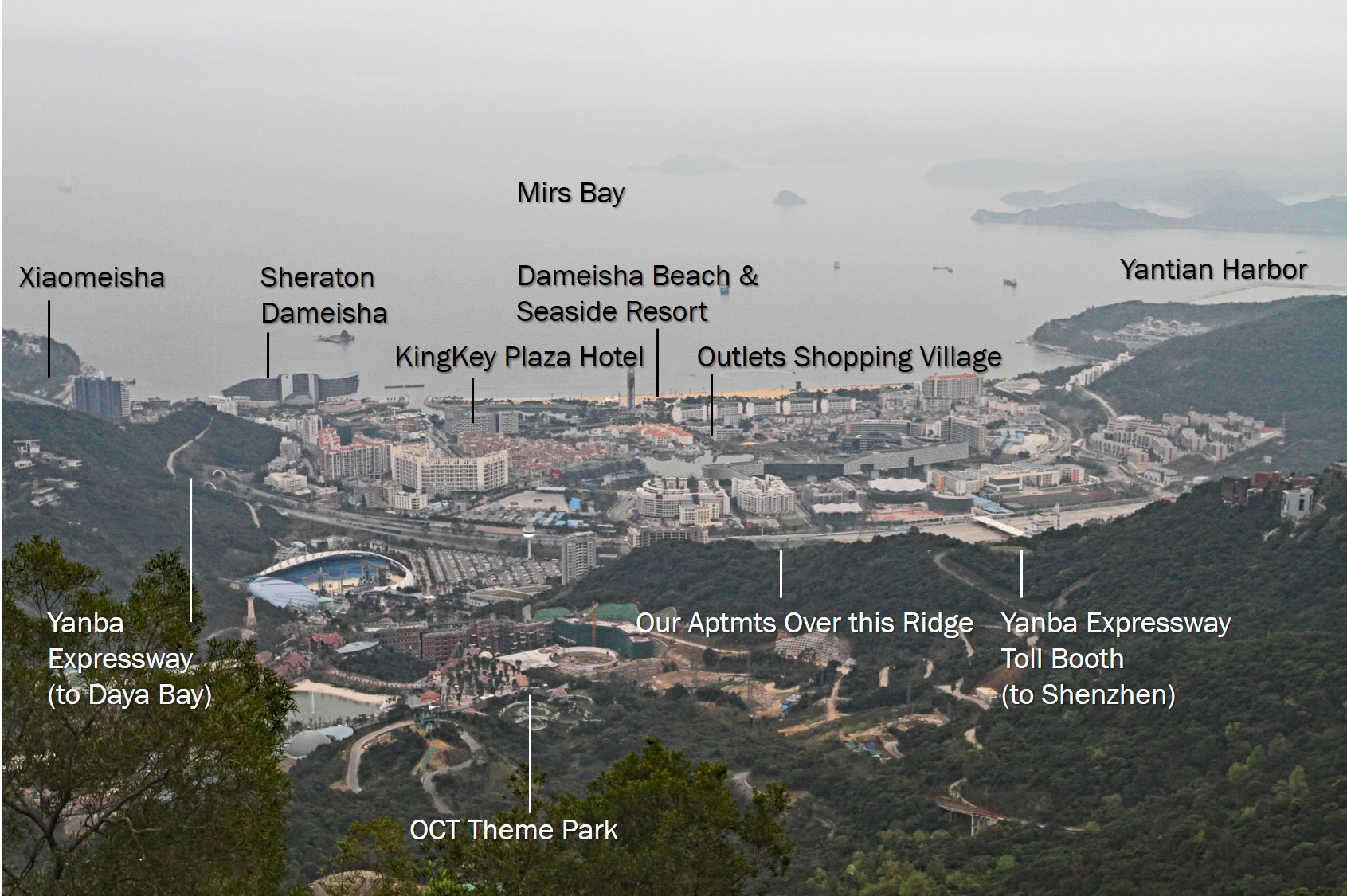
Here’s the cute translation into English, from the back of the coconut coffee bag. (Would have posted it yesterday, but had to wait until I got home so that I could take a high-resolution picture). Note the creative breaks in the words T-his (wow) and su-mmer, and – the taste will be better when it is hot drink in winter. Gotcha! :).
Friday, and a rough week it was, with long work days. It’s the last day of the new year’s week, and hopefully the firecrackers at night will now draw to a close. It wasn’t really all that bad, though.
Here is a little Mandarin lesson from our colleague: how to write and say ‘Happy New Year’.

新 new, recent, fresh, modern
年 year; new-years; person’s age
好 good / well / proper / good to / easy to / very / so / (suffix indicating completion or readiness)
It was cold in the office yesterday. The new building’s heat pump was not working for some reason. Back at the apartment in Dameisha at night, we still hear a barrage of fire-cracker pops and fireworks go off, as the week-long celebration of the Lunar New Year continues. It is cold in the apartment as well. Our $12 space heaters from Shenzhen’s Walmart are not quite up to the task of warming up the entire apartment, of course.
Anyway, sticking to the theme of cold: below are the snowy cover pages of the English & Chinese versions of ‘Tintin in Tibet’. Tintin translates to Ding Ding in Chinese.
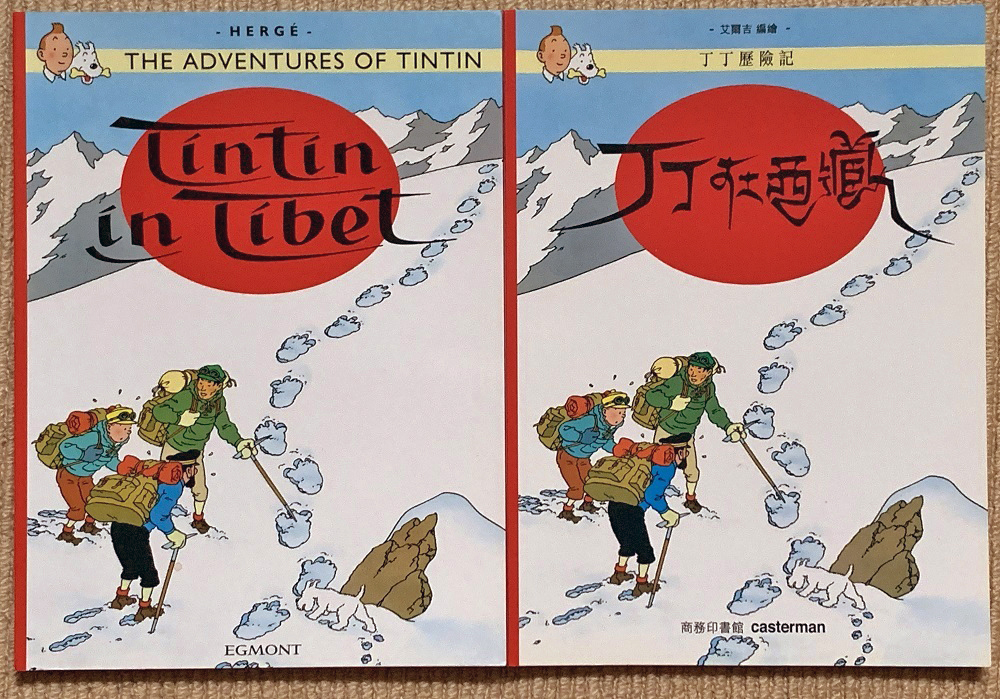

[From Wikipedia] The Adventures of Tintin (Les Aventures de Tintin) is a series of comic strips created by the Belgian artist Georges Rémi (1907–1983), who wrote under the pen name of Hergé. Tintin in Tibet is the twentieth book in the series. It is said to have been Hergé’s favorite of the Tintin series (previously The Secret of the Unicorn), and was written during a personally difficult time in his life, as he was divorcing from his first wife. The story is unlike any previous Tintin books, before or since: there is a small number of characters and no enemies, villains, spies or gangsters. This adventure revolves around a rescue mission of Tintin’s Chinese friend Chang Chong-Chen.
It is also unusually emotional for a Tintin story: moments of strong emotion for the characters include Tintin’s enduring belief in Chang’s survival, the discovery of the teddy bear in the snow, Haddock’s attempting to sacrifice himself to save Tintin, Tharkey’s return, Tintin’s discovery of Chang, and the yeti losing his only friend. Indeed Tintin is seen to cry when he believes Chang’s fate, something he is only seen to do three times throughout the entire series (the other occurrences being in The Blue Lotus and Flight 714).
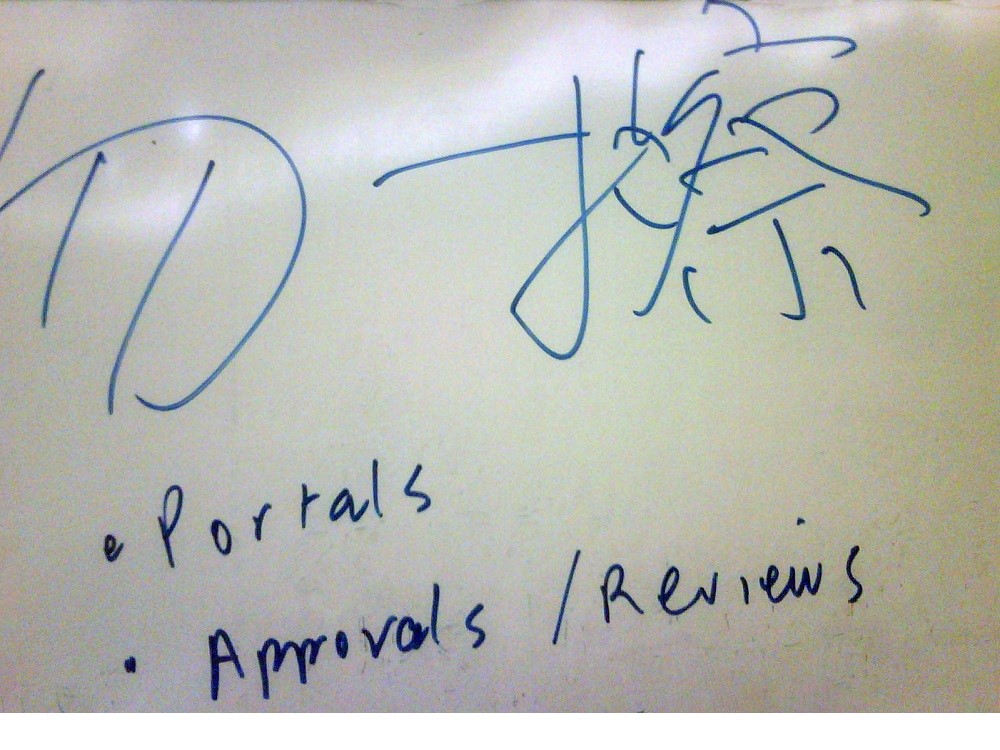 So check this out .. I wrote ‘Do not Erase’ on the whiteboard, and then my Chinese colleague wrote it in Chinese next to it, for good measure. That second one is a 17-stroke character! Wow. So as the amateur very limited-time student of Chinese I had become, just had to go look up the characters on my translator .. and voila!
So check this out .. I wrote ‘Do not Erase’ on the whiteboard, and then my Chinese colleague wrote it in Chinese next to it, for good measure. That second one is a 17-stroke character! Wow. So as the amateur very limited-time student of Chinese I had become, just had to go look up the characters on my translator .. and voila!
勿 wù must not, do not; without, never
擦 cā to wipe / to erase / rubbing (brush stroke in painting) / to clean / to polish
And this sign says ‘Good Luck’ .. which I hope I will have a little of for my trip this weekend to Hong Kong. I see the New Year’s Parade was back in January, so I missed that, but even so there should be an exciting vibe there this weekend. I need it, since I am a little homesick, and that after just one week out here this trip.
It was rainy this morning, and cleared up later. I don’t mind the rain at all. One of Seattle’s monikers is Rain City, after all. (For a while there was Jet City, while Boeing was still headquartered here, and we have Emerald City for tourists, a better one than Rain City, I’m sure).
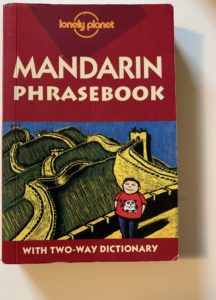 It was a busy day, but not too hectic. I bought a Mandarin phrasebook (the inevitable panda on the little guy’s shirt), a Hong Kong book, and a Chinese character study book. Sounds like I’m serious about learning some Chines, but all I hope for is to make a start with, say 200 or so characters !
It was a busy day, but not too hectic. I bought a Mandarin phrasebook (the inevitable panda on the little guy’s shirt), a Hong Kong book, and a Chinese character study book. Sounds like I’m serious about learning some Chines, but all I hope for is to make a start with, say 200 or so characters !
My passport and multiple-entry visa will arrive tomorrow (the first visa only allowed two entries, and I have used both). I also went ahead today and applied for an ‘enhanced’ drivers license that can be used to cross the border into Canada and Mexico by car, ferry or rail (or foot, I suppose) – just in case I had to send in my passport, and then want to go up to Vancouver for the weekend. I was allowed to smile, see? : ) which surprised me because I thought smiling distorts the biometric data gleaned from one’s face (lines between the eyes, nose and mouth) on the picture.
Tonight my friends & I went to a nice neighborhood bar for cocktails, beers and pub food. It was wonderful – it always is.
I love the old-fashioned neon signage at this seafood restaurant in Dameisha.
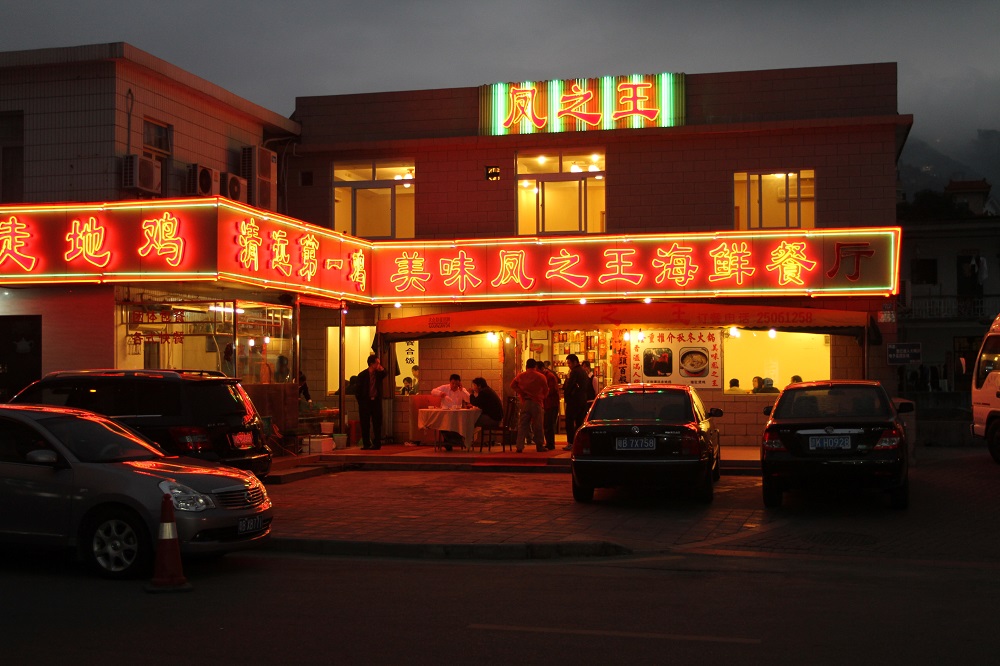
In China, most workers take a ‘siesta’ after lunch (I thought it was only the Spanish, but no) – it is called wǔ jiào and they really have cots here at work on which they sleep for an hour after lunch! Then they troop back in here and work with us. Not fair! I want some wǔ jiào too!
Green tea is very popular among my Chinese colleagues here at work.
The mugs have lids on, to keep the tea hot a little longer.
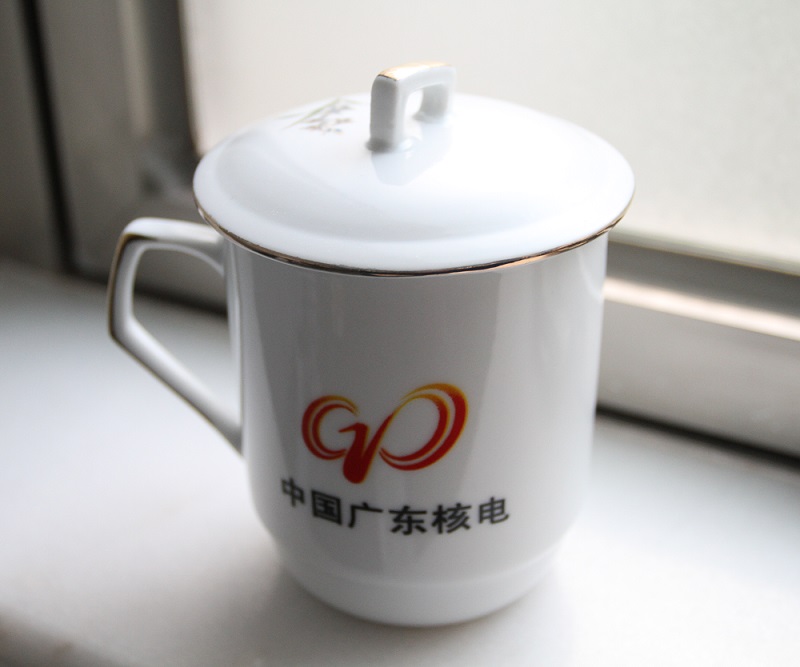
Back at the apartment, Monday at work behind me. Today I saw an SAP screen in Chinese alongside the English version. The English is flawlessly lucid 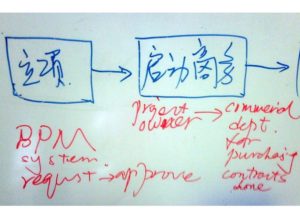 – and the Chinese unfathomably foreign! 🙂 Here is how Chinese characters are entered into any system : a Chinese computer keyboard is very close to a Western style keyboard, but the user types in syllables or English phonetic equivalents of Chinese characters. Embedded software interprets the keystrokes and pops the Chinese character into the application. Even more fascinating is to see a Chinese person actually writing these squiggly spidery characters on a piece of paper or on the whiteboard. How did you ever learn to do that? I wanted to ask them. (Answer: 15 years of education, at home and in school).
– and the Chinese unfathomably foreign! 🙂 Here is how Chinese characters are entered into any system : a Chinese computer keyboard is very close to a Western style keyboard, but the user types in syllables or English phonetic equivalents of Chinese characters. Embedded software interprets the keystrokes and pops the Chinese character into the application. Even more fascinating is to see a Chinese person actually writing these squiggly spidery characters on a piece of paper or on the whiteboard. How did you ever learn to do that? I wanted to ask them. (Answer: 15 years of education, at home and in school).
I’m learning a little bit more about the written Chinese language, a language of pictographs. Many basic Chinese characters are in fact, highly stylized pictures of what they present.
Around 9 out of 10 characters is a combination of a ‘meaning’ element and a ‘sound’ element.
A contemporary Chinese person might know and use between 6,000 and 8,000 characters – but one can get by with as few as 2,000 or 3,000.
The two characters 入口 rù kǒu on the sign below stand for ‘entrance’. A depiction of a person that goes through a door, opening, gate.
‘Exit’ looks like this 出口 chū kǒu. That first character is a foot, coming out from an enclosure! The foot is leaving through a door, or gate.
Well – what can I say? I was Alice, and Walmart was a wonderland of Chinese culture and department store marketing of food, houseware, electronics and clothing. There we were, 15 of us dropped off with a little bus, looking for household items and food for our apartments in Dameisha. And did we load up that bus!
Walmart being what it is, the choices were cheap and enormous – and of course, they had Kraft branded food products and Coke & Pepsi, but there were still some surprises. Dinner plates were hard to find. Chinese food is served up in bowls. T-shirts were not plentiful at all.
The food was the most fascinating, from the ‘wet area’ where one could catch one’s own super-fresh seafood (yes, right there in the store, the way the staff did at the restaurant the other night), to teas of all kinds, milk tea, a limited selection of good coffee, candy, but relatively few chocolate products, noodles of all kinds, root vegetables, fresh ginger, eggplant and durian.
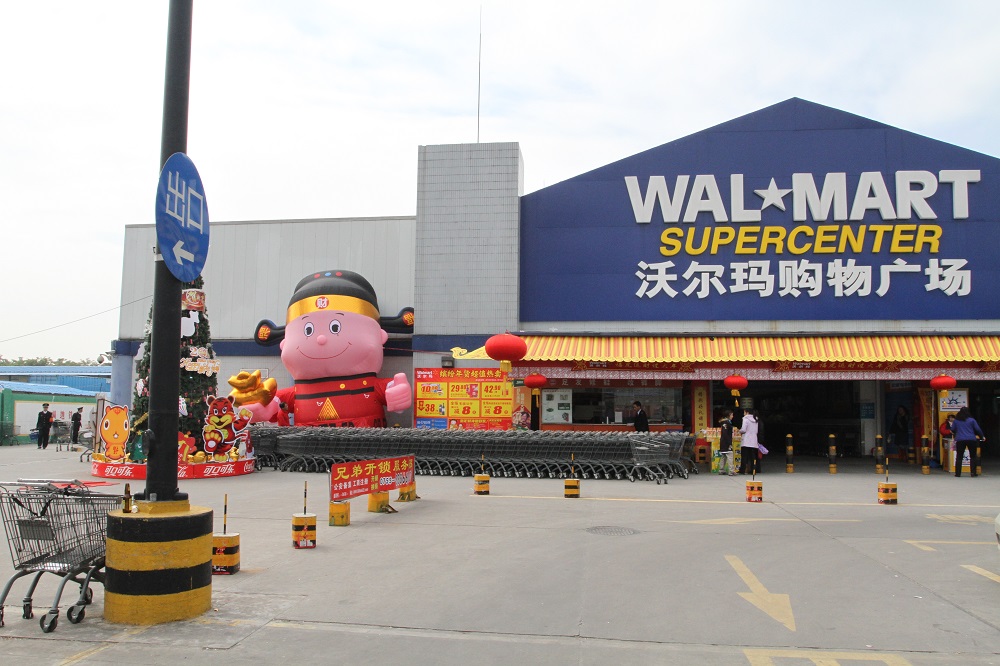

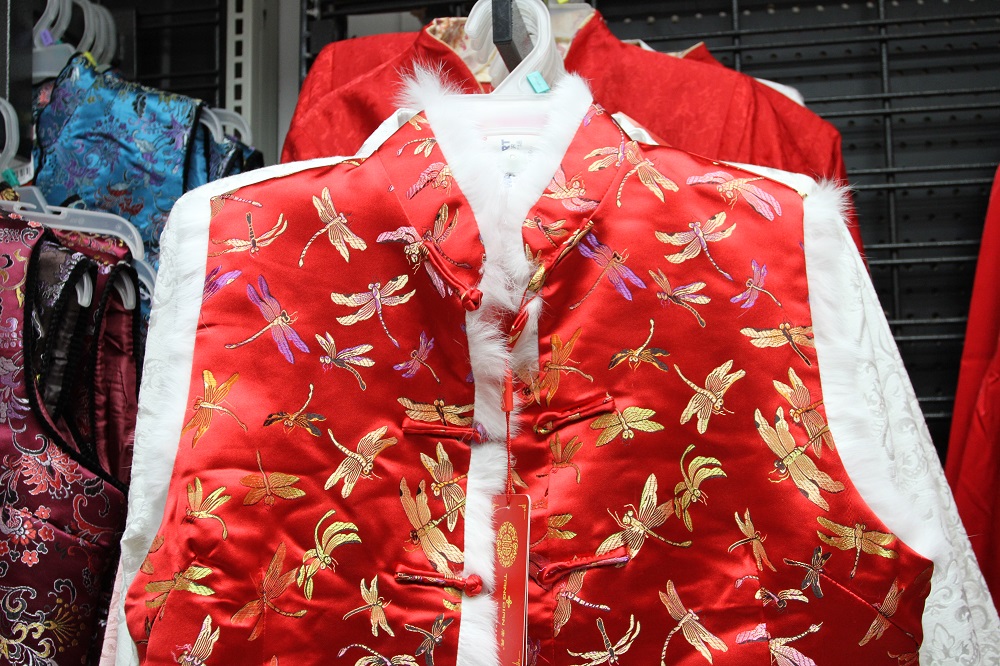

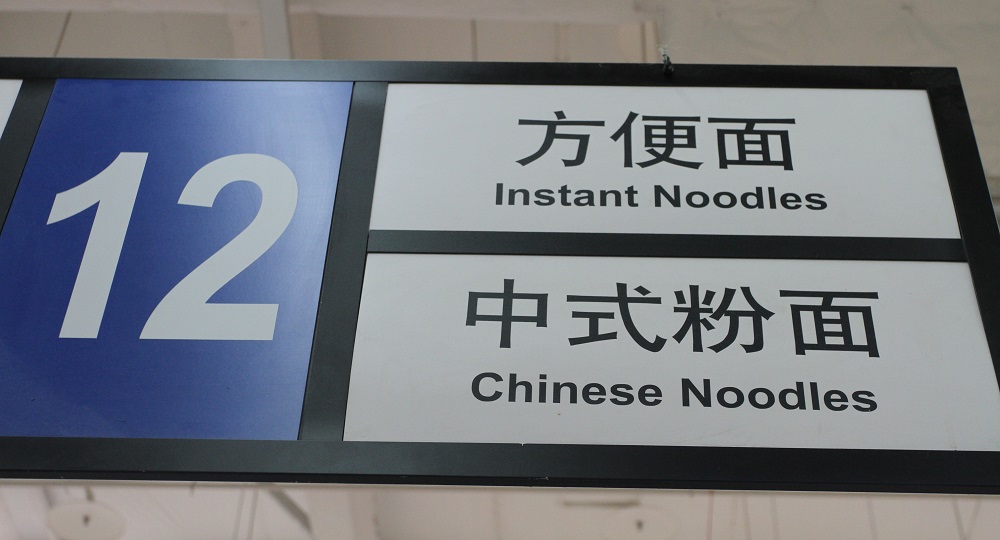
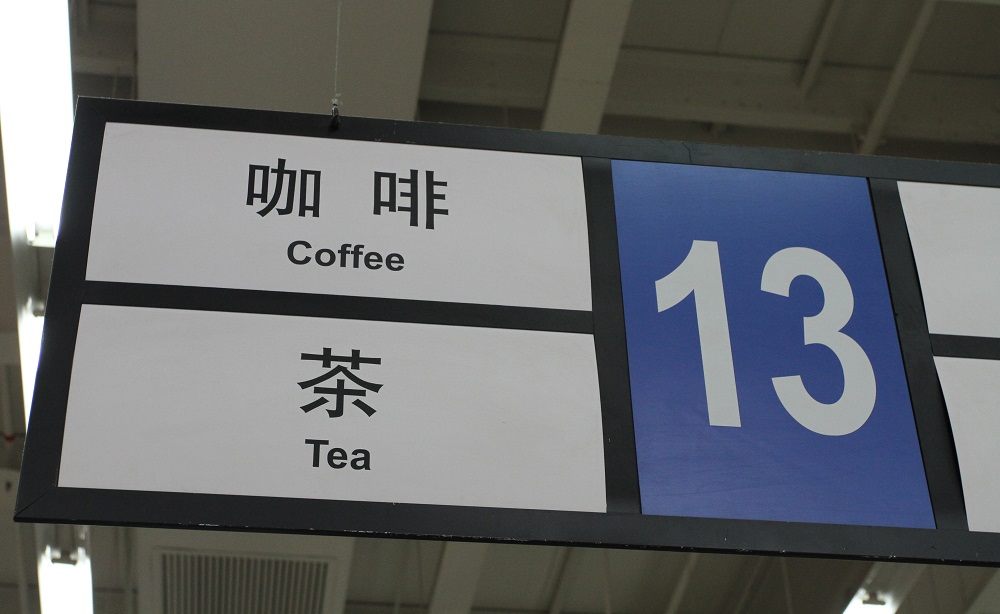
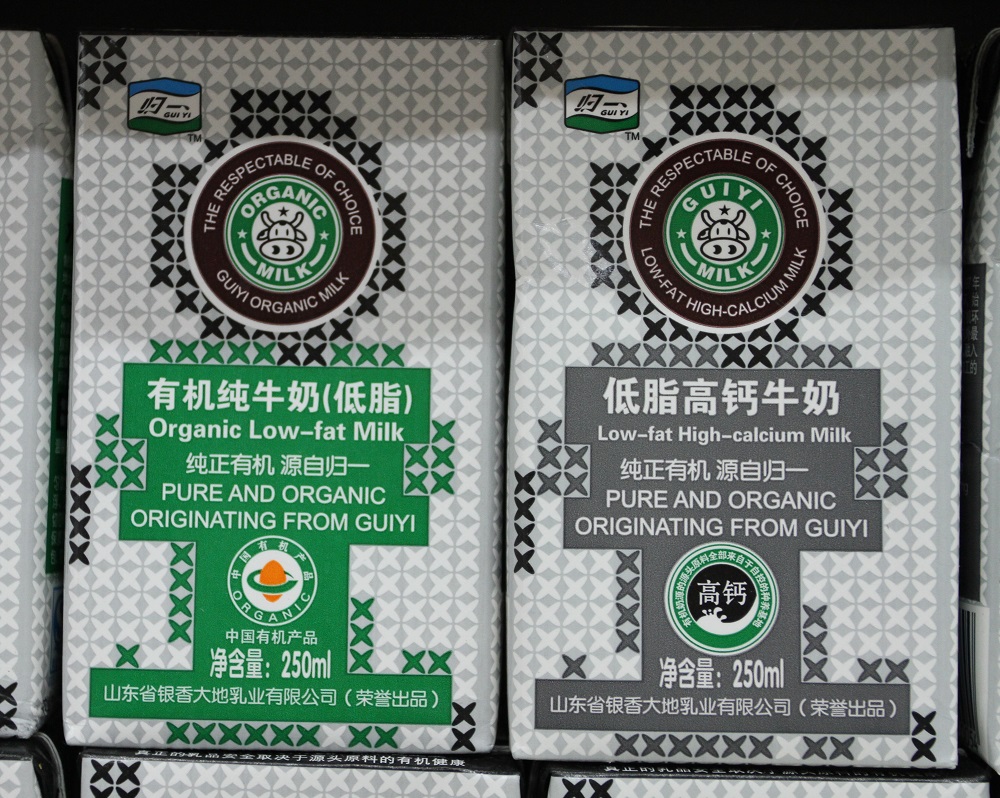
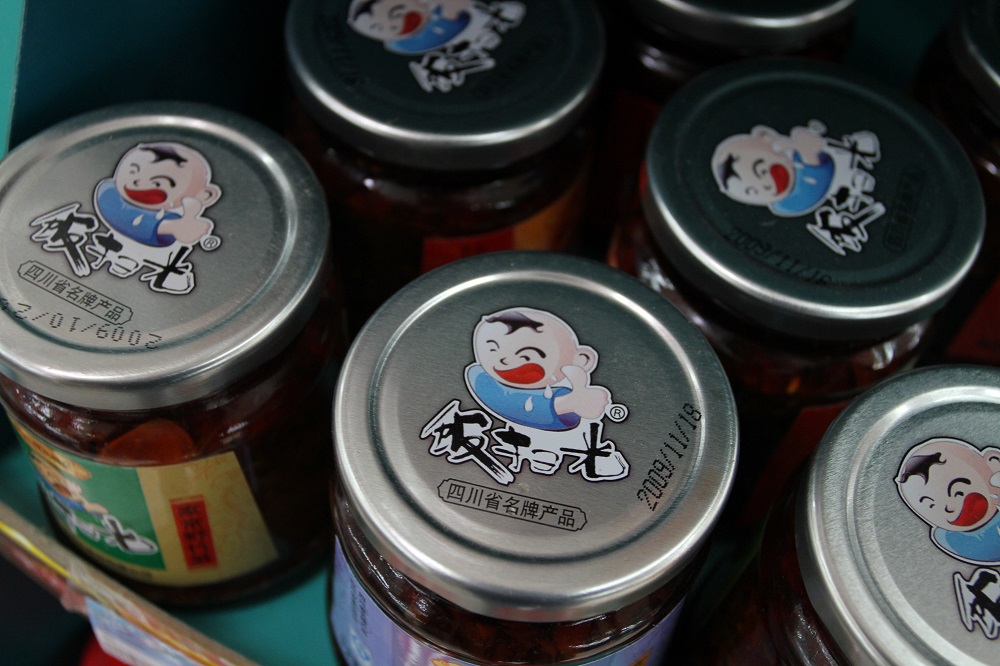
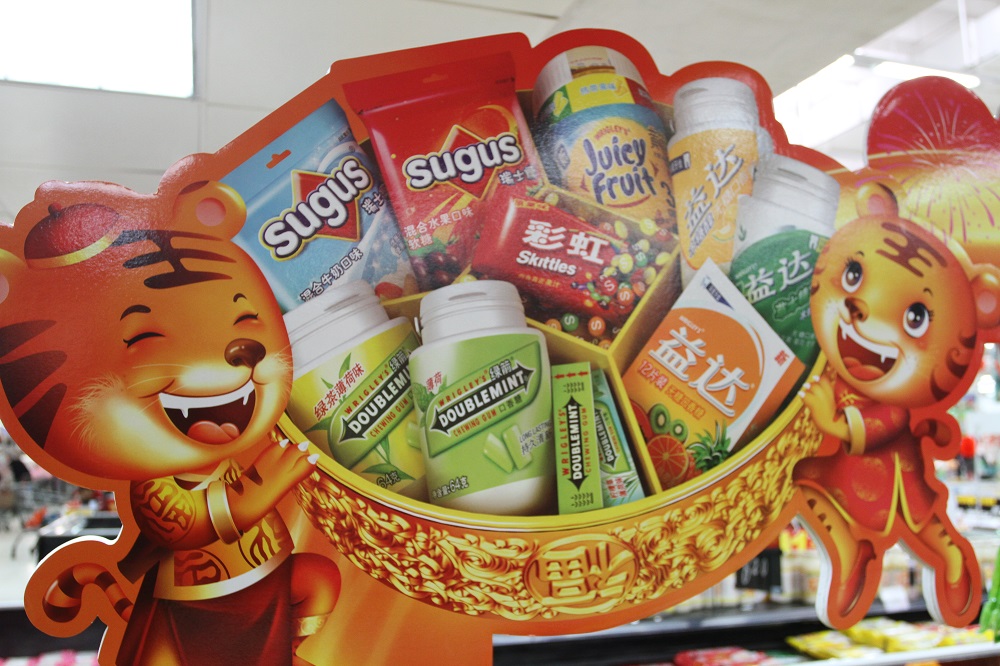
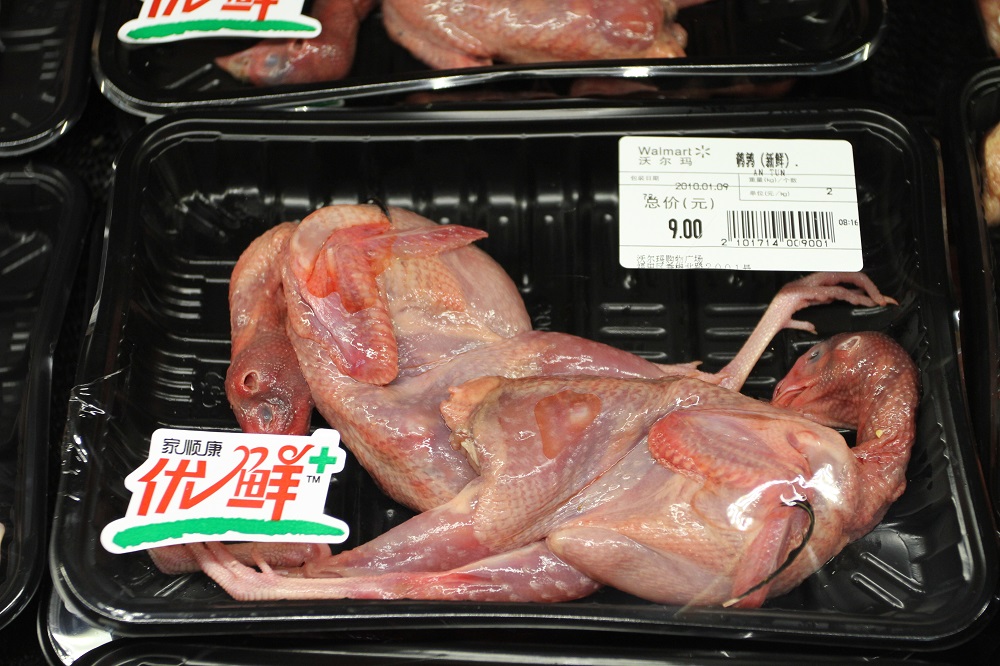
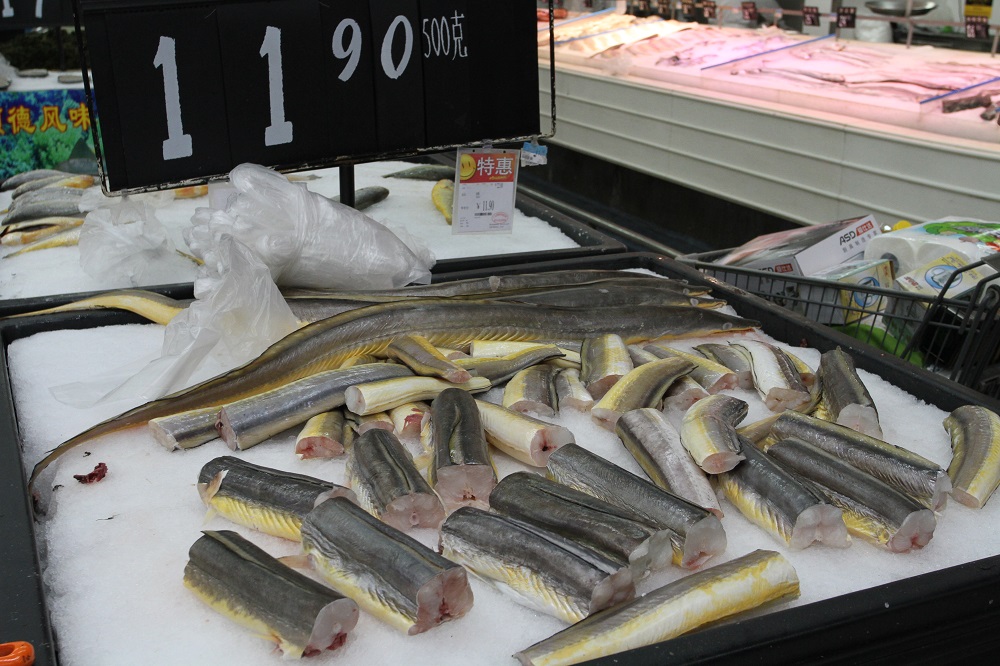
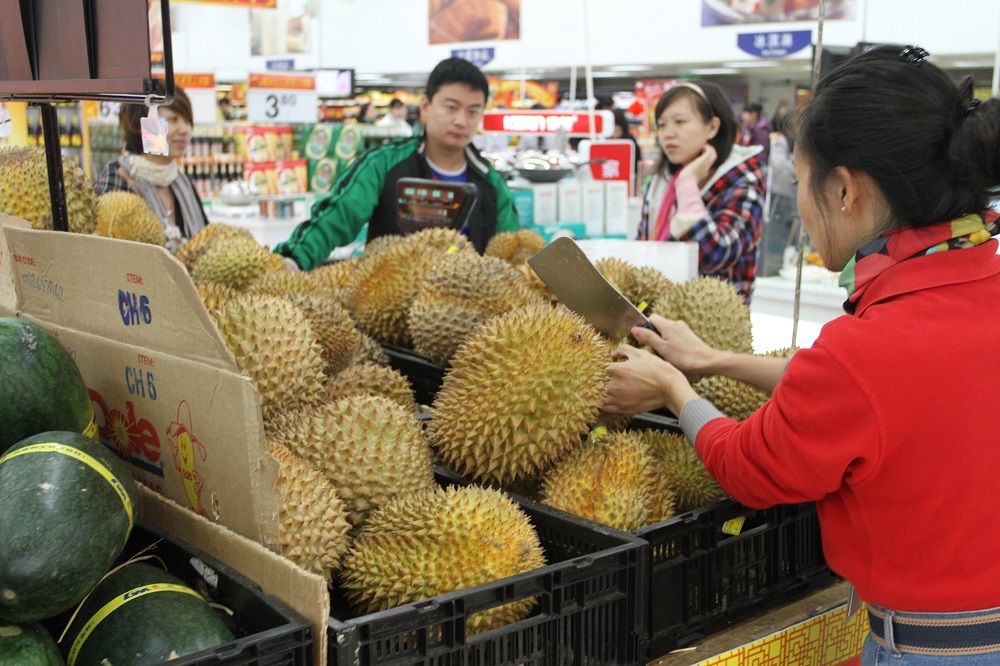
.. so we’re getting out of the office! Woo hoo !
There are plans afoot to visit Walmart in the city of Shenzhen on Saturday, so that we can get pots and pans, knives, forks, extra towels & what have yous. My internet access at the apartment is not up and running yet, nor is the central heating working.
We have made a start to our project, though; met dozens of colleagues and client team members, and it was not a bad week at all.
